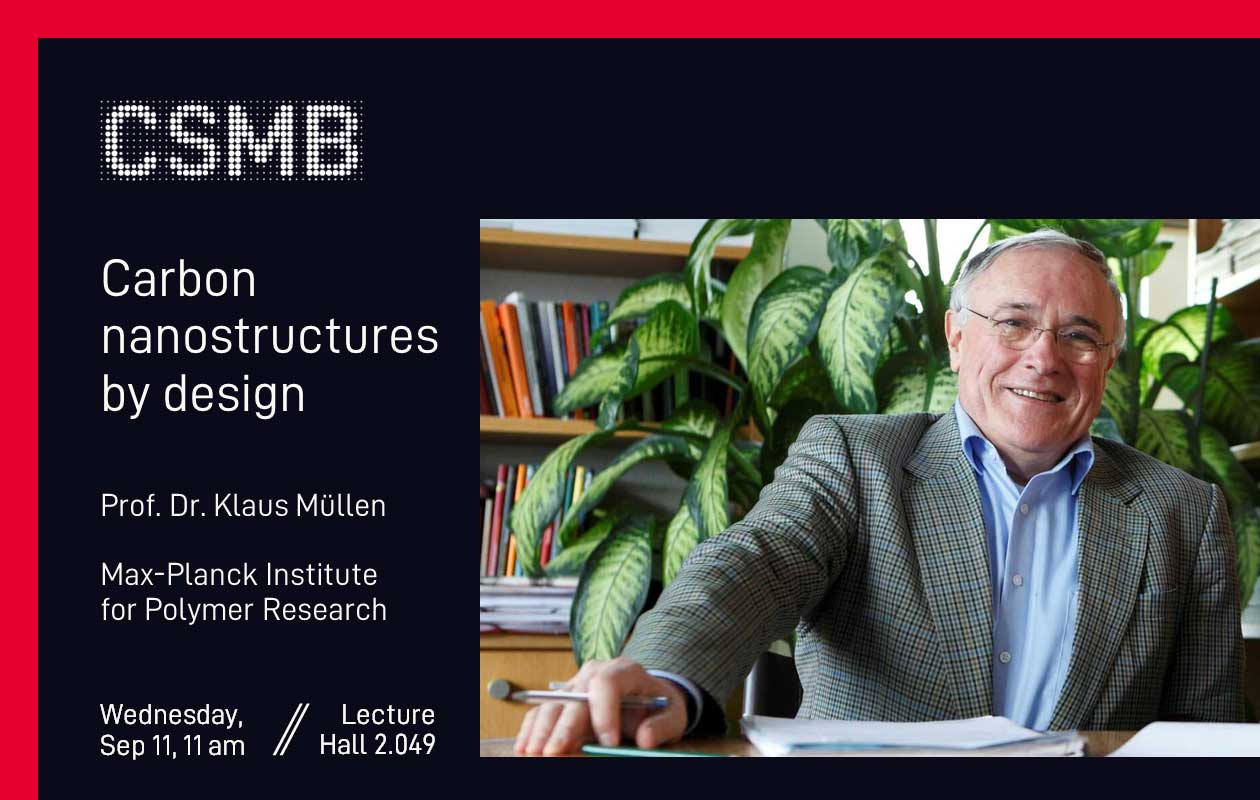
Carbon nanostructures by design – Klaus Müllen
We are honored to welcome Prof. Klaus Müllen, a globally recognized pioneer in the field of polymer science and nanotechnology. Renowned for his work on the synthesis of previously inaccessible macromolecules and supramolecules, Müllen has paved the way for advances in organic electronics and materials science. He is also considered the father of the chemistry of nanographenes, two-dimensional nanomaterials with extraordinary properties. His contributions have significantly influenced the study and application of these cutting-edge materials.
In this seminar, Prof. Müllen will take you on a chemistry-driven journey through carbon nanostructures, focusing on structural perfection and a powerful two-step protocol to create 2D-graphenes from 3D-polyphenylenes. Key breakthroughs include disc-type nanographenes and graphene nanoribbons, which offer innovative solutions for electronics, energy storage, and even quantum technology.
Abstract (PDF):
Carbon Nanostructures by Design
Klaus Müllen
Max Planck Institute for Polymer Research, Mainz, Germany
This is a chemistry-driven journey through the fascinating landscape of carbon nanostructures with size and dimensionality of molecules as guidelines. Two principles stand in the foreground: structural perfection even for ultralarge polymers and a powerful two-step protocol where dendritic 3D-polyphenylenes are flattened toward target 2D-graphenes. This reaction can be performed oxidatively in solution, but also thermally after deposition of the precursors on catalytically active metal surfaces.
From a functional point of view, the key breakthrough comes from unprecedented disc-type nanographenes and graphene nanoribbons (GNRs). The former include giant, but crystalline helicenes, the latter are quasi-1D-semiconductors which establish a unique generation of electronic materials. The most important features are i) the opening of an electronic band gap due to the geometric confinement, a requirement for field effect transistors, ii) the occurrence of stable high-spin systems with precise spin-spin interactions, a prerequisite for spintronics and iii) the occurence of exotic quantum states. All characteristics offer new concepts for electronic and energy storage devices, but also disruptive opportunities in complex, graphene-based electronic circuitry and quantum technology.
Equally important are 3D-polyphenylenes which are synthesized with atomic precision by way of a repetitive Diels-Alder cycloaddition. They are functional multitalents since they serve as carbon reservoirs for graphene synthesis, as efficient light-harvesting complexes, but also as carrier nanoparticles for biomedicine. DNA-transfection and disassembly of protein fibrils causing neurodegenerative diseases are fascinating applications.
Science 2019, 366, 1107; Nature Nanotechnology 2020, 15, 22; Nature 2018, 557, 69; 560, 209; 561, 507; Nature Rev. Chem. 2017, 2, 01000; Nature Synthesis 2022 , 1, 289; Progr. Polym. Science 2022, 123, art. No 101489; Nature Chemistry 2021, 13, 581; Progr. Polym. Sci. 2022, 123, art. no 101489; J. Amer. Chem. Soc. 2022, 144, 11499; Chemistry-Eur. J. 2023, e202203735; Nature Materials 2023, 22, 180-185 ; Nat. Commun. 2024, DOI: 10.1038/s41467-024-51806-8; J. Am. Chem. Soc. 2024, 146, 7480

